Shamika Kulkarni, Pune
Meet Shamika Kulkarni, an architect by profession, a passionate gardener with green at heart. She has very creatively woven her knowledge of landscape architecture into her garden. Garden is planned, but not manicured. She has managed to preserve the “wild” aspect while introducing order in elements.
Here is why and how Shamika started garden
The family home was built in 1964. Her grandfather-in-law, her husband’s grandfather created garden.
When Shamika took over, while she preserved the original garden; she made some rearrangements. She says, since space was there, she decided why not make use of it in a good way?
She studied the sun path diagram & decided to make garden accordingly. Total shady part of the house was utilized for parking space, semi shade for ornamental garden & sunny part for productive garden. After surfing on net & FB groups, she planted variety of plants as per their characteristics. Also, spaces for sit outs, composting units, water taps at suitable, required locations were made.
Shamika has a garden as well as terrace garden. Terrace garden is entirely soil-less. Entire garden is chemical-free.
Waterproofing
She did not do any additional intervention; just the original waterproofing of the house has proved enough. She never faced water leakage issues.
Planning
Like any other project, deciding objective is necessary for household garden. Here we do not have acres and acres of land at disposal. Hence to get maximum out of a few hundred sq. feet, we need to decide exactly what we wish to cultivate.
For Shamika, toxic chemical fertilizer free vegetables, fruits for her family was the primary objective. Hence, she added vegetable and fruit plants to the existing garden.
Preparation
For soil-less gardens, some planning before-hand is necessary. Visit to nursery to buy plants and seeds is very exciting. But unlike soil garden, here we need to prepare compost before we can start plantation or sowing.
How does she prepare compost?
Except for the concrete pit composter, Shamika has built her own composters. She has in all 3 composters on ground and 1 one the terrace. All her composters are made by her reusing material around the house.
Her compost comprises of dry leaves and kitchen waste. She uses Inora compost culture and Inora IVEM solution to speed up the process.
One is concrete pit, where she composts kitchen waste and dry leaves.

Concrete pit composter for kitchen waste


Compound wall on 2 sides and frame of old clothes drying stand, with shadenet wrapped on it, on other two; and the composter is ready. Except for the pit for all other composters, she uses only dry leaves.
For composting, ATM is necessary, Aeration, Temperature and Moisture. Shadenet being porous allows aeration.
For moisture, she has placed a watering pipe, with holes in it. She has circulated that pipe such that it covers the entire composter. Dripping water provides moisture to the whole content.
Temperature anyway is not a challenge for tropical country like our’s. Additionally, the size of composter ensures, there is enough mass to enclose heat that is produced in composting.
If composter is too narrow, then this heat is lost.

Old drum is converted into composter

Composter made from pigeon mesh

Her son’s old toy basket serves as composter
Observe how aeration is built in the design of all these composters. Water logging is the only challenge as far as dry leaves composting is concerned. If excess water does not drain, it accumulates, creating anaerobic condition and hence the foul smell. Porous nature of composters allows excess water to drain.

Large plant bed like this, acts as a composter itself. Keep adding dry leaves and kitchen waste and let nature do the work.
Preparing plant beds and containers
Again, for containers, she has made use of discarded concrete blocks, wood planks, old clothes drying stand, stool, drums, plastic bottles and bags.
When you look at her garden, many creative elements emerge. Her garden is colorful and interesting because of use of diverse objects as planters. It is also praise-worthy, how much material she has prevented from going to land-fill.
Compost made from dry leaves and kitchen waste is used in them.

Die-shaped stool now makes an attractive planter


Her son’s swimming tank, when he was an infant, now serves as planter

Plant beds made of concrete blocks being prepared for sowing

Vertical garden using soft drinks bottles
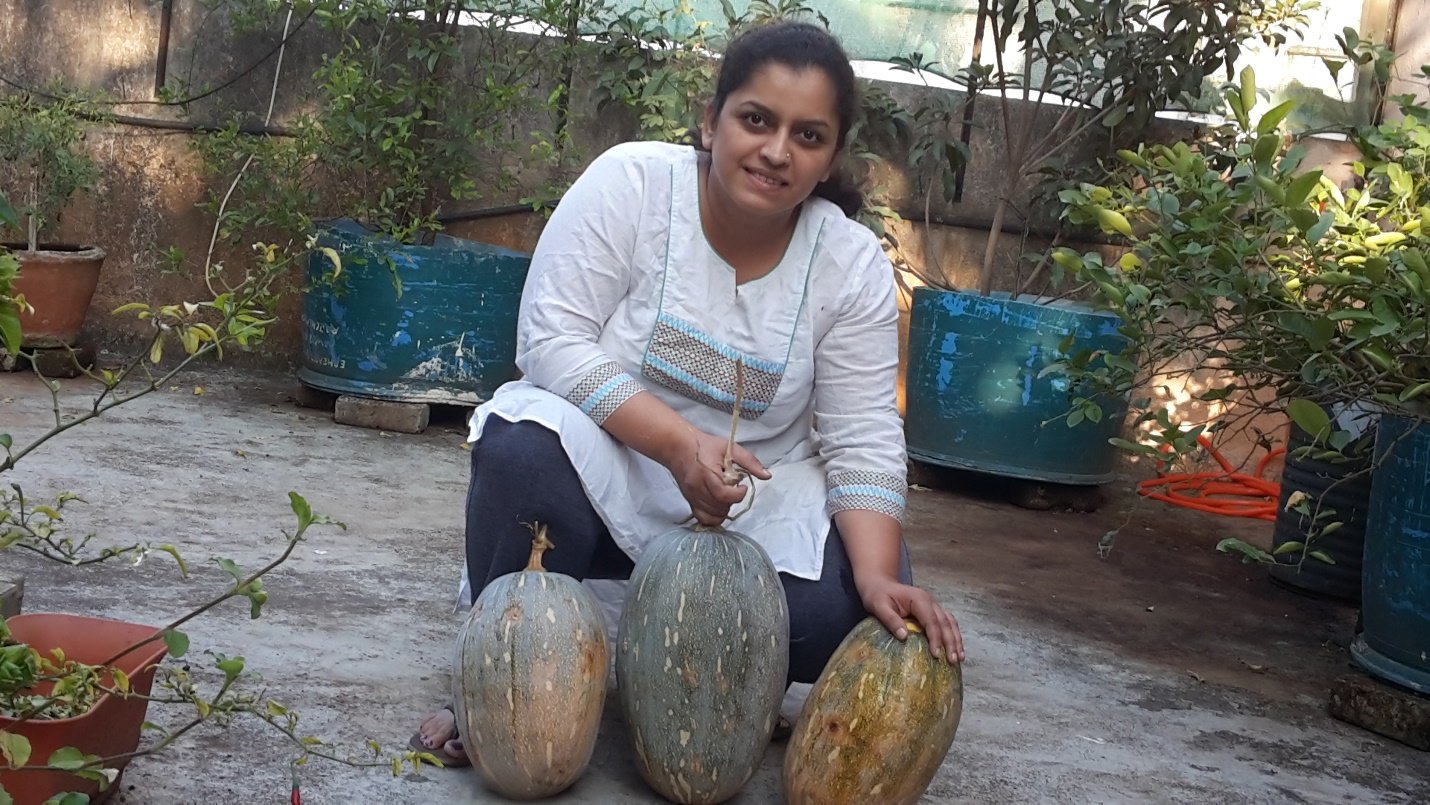
Where to get dry leaves?
There are two large trees near her house. In fact, they look like 2 guards, on either side of entrance. Both are exotic trees, one is ornamental Almond and the other is huge rain tree. There is one more tree near back wall. It is Umbar, a ficus variety.

Ornamental Almond tree

Rain Tree
Almond sheds leaf 2-3 times a year. Usually it is observed that leaves of exotic trees decompose slow. Shamika too shares this view. But she experienced that, when these leaves are mixed with some other tree leaves, decomposition rate increases.
Pods of Rain tree though provide to be a challenge. Currently, Shamika is experimenting with them, to expedite its decay.
Sweepers appointed by municipal corporation, sweep streets and make heaps of collected leaves. Later, vehicle is sent to pick up those leaves.
Shamika wishes to utilize dry leaves from her lane. However curbside leaves come with challenge of their own. Dry leaves are considered as “waste”. When leaves are collected in heaps by the sweepers, people dump garbage, spit in it. Dog poop is also a problem. Shamika feels if awareness is generated, then many gardeners will be able to utilize leaves from the lane in their garden. It will take huge stress off municipal solid waste collection and management system.
She also suggests setting p composters by roadside. Municipal sweepers will simply put leaves in those composters. It is easily doable, if neighborhoods and governing agency can take initiative.
Regular Care
Regular watering, adding compost are usually enough. She uses gomutra (cow-urine) spray, neem spray as pesticide.
Watering

Do avoid over-watering. It introduced various problems and pests.
Mulching helps soil retain moisture and thus water is conserved. Let leaves that fall in the plant bed be. Don’t sweep them off. To read more about mulching, do read our blog, https://brownleaf.org/mulch/
Challenges
Millipedes prove to be challenge from time to time. They sometimes enter the house from the terrace.
Produce from terrace garden
Vegetables
Brinjal, Chilies, Beans, Ridge Gourd, Drum Sticks, Taro, Tomatoes, Cabbage, Bottle Gourd, Pumpkin, Lemon, Potatos


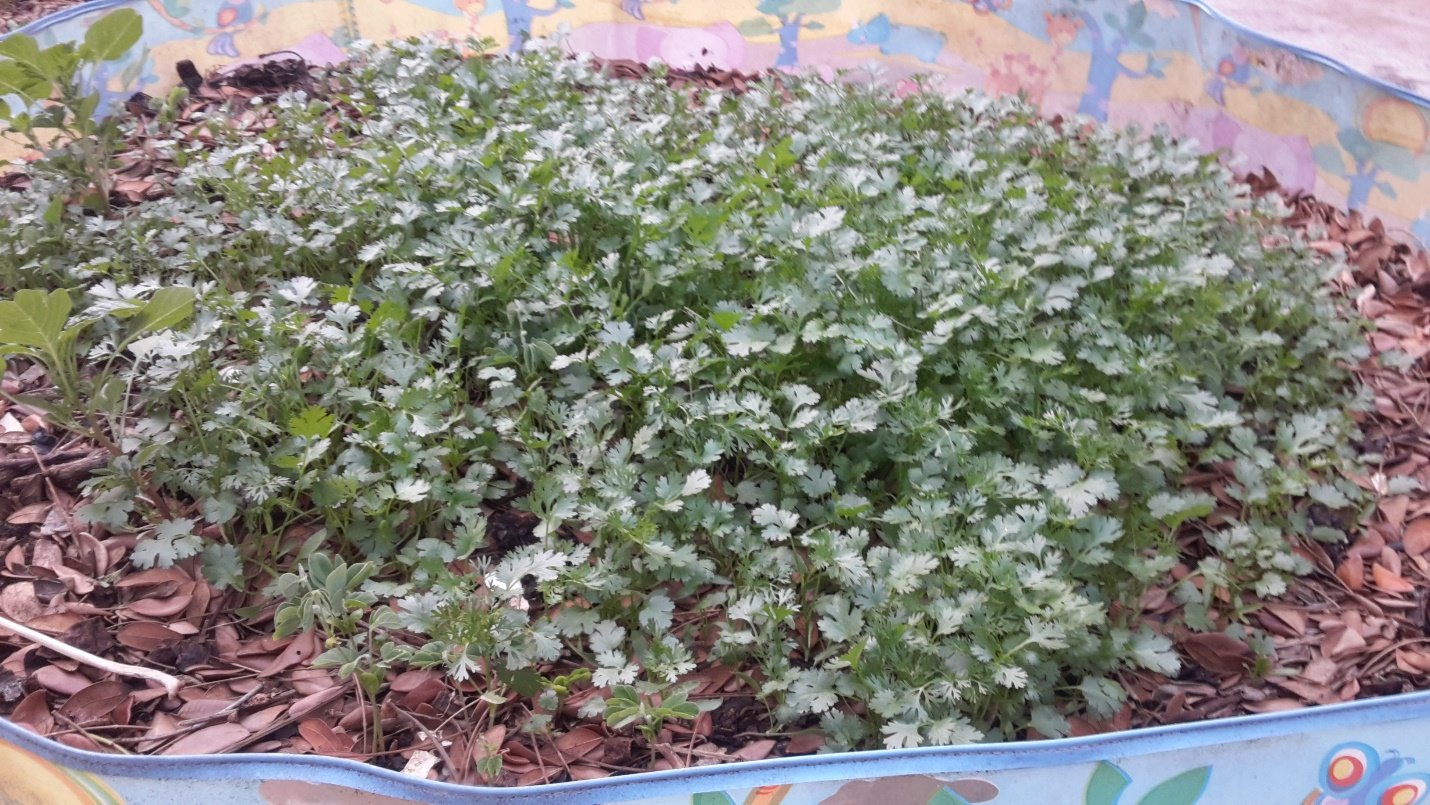

Fruits
Papaya, Banana, Passion Fruit, Mango, Pomegranate, Mulberry, Chikoo, Coconut

Passion Fruit

Banana
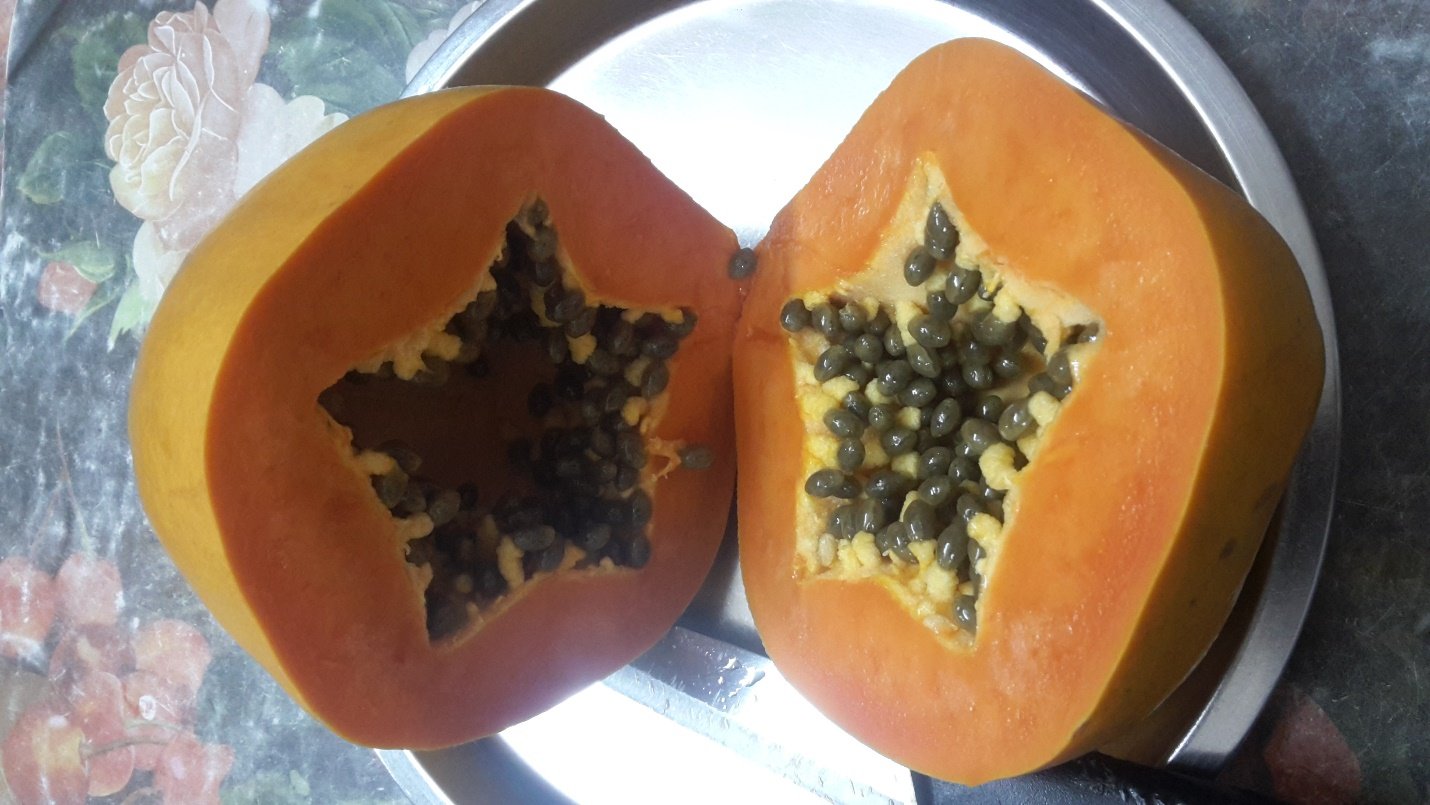
Papaya
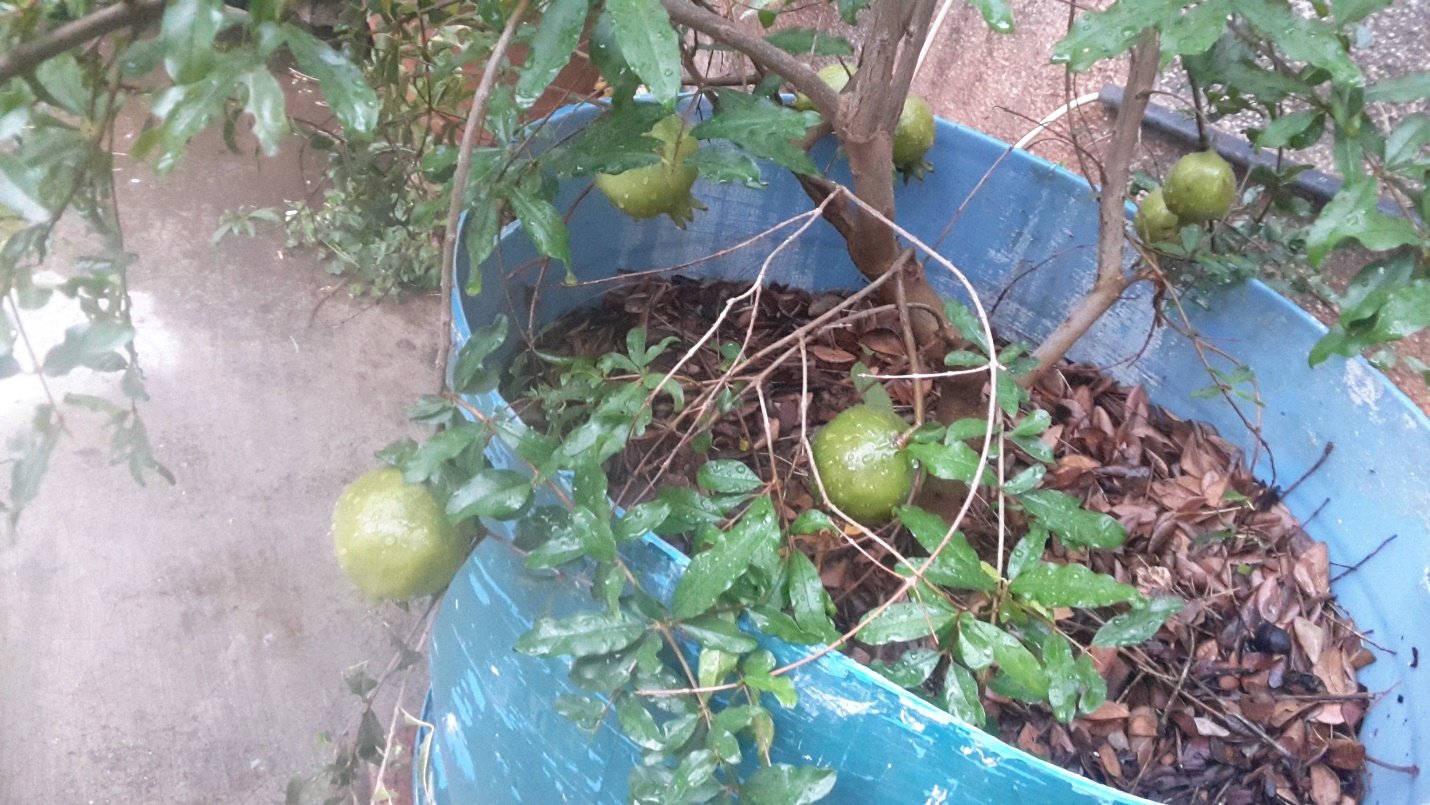
Pomegranate
Herbs
Lemon grass, Curry leaves plant, All Spice
Flowers
Champa, Exora, Gulabakshi, Roses, Hibiscus, Balsam, Anthurium, Musanda, Parijatak, Kavathi chaafa, Tagar, Aboli, Mogara, Jasmin, Vinca, Bougainvillea, Pentas, Lilies, Shankasur
Shamika’s garden provides habitat to a wide variety of insects, butterflies and birds. She keeps butterfly caterpillars in a glass vase, where she and her son had great time watching caterpillar enter pupa stage and finally a butterfly emerge.
Crow Pheasant, Sunbirds, Bulbuls, Myna, Kites, various dragon flies, honey bees, moths, praying mantis and butterflies like Common Mormon, Tailed Jay, Tiger are some of the common visitors.
Shamika ensures her son is exposed to such experiences. They inculcate sensitivity to environment and all living creatures right from the formative age.

Purple Sunbird nest in the bedroom window that opens in terrace garden
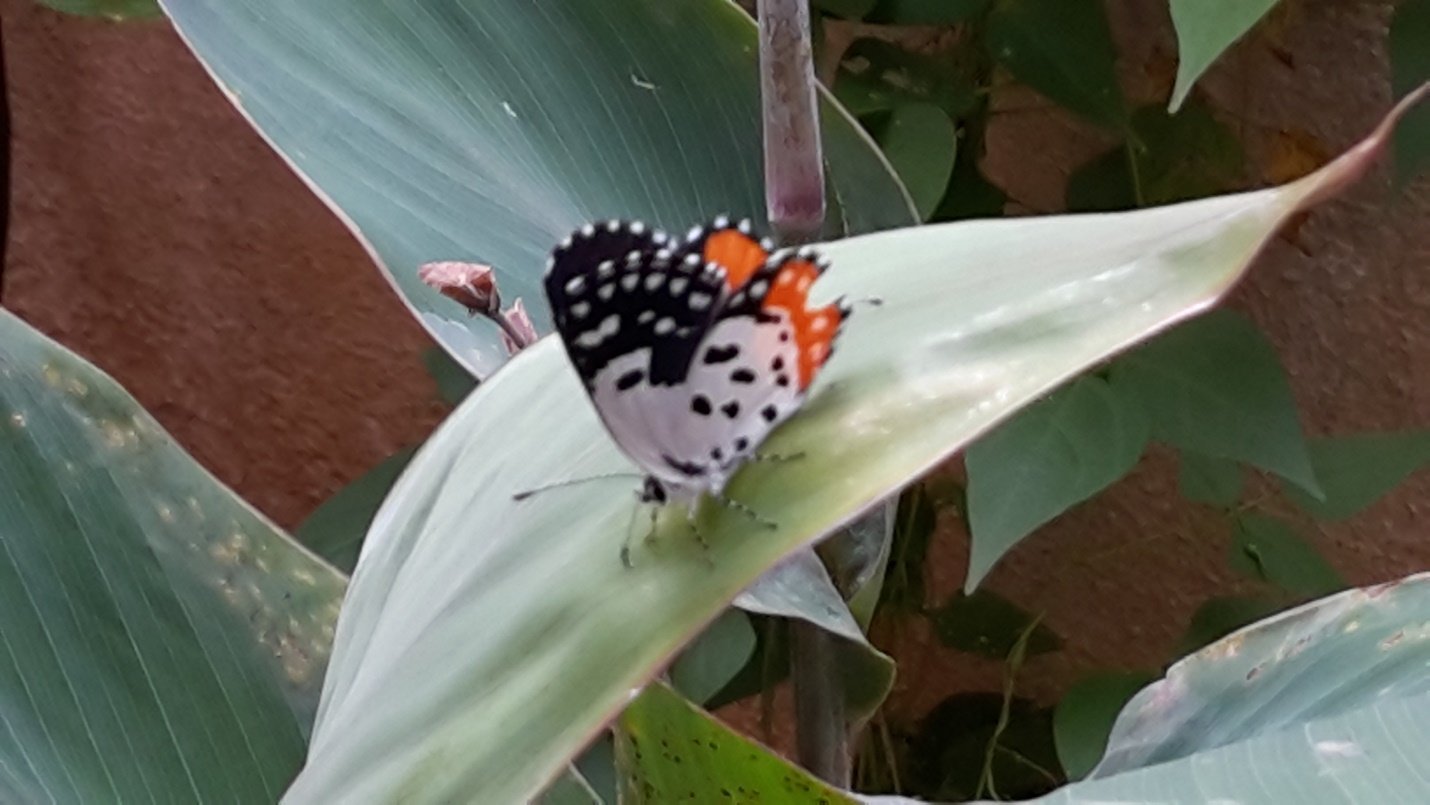
Red Pierrot Butterfly

Common Mormon butterfly reared in Shamika’s garden

Tiger butterfly caterpillar

Dragon fly


Red-whiskered Bulbul
Concluding Words
Garden digests household wet-waste and dry leaves from trees. Shamika stresses that, wet-waste from her house does not go out and that is the reassuring feeling for her, as a responsible citizen.
Passion for gardening, concern for environment, attention to detail and creativity, when come together, the result is such a beautiful garden. Sitting on the swing, amidst her plants, trees around; it is mediation for her.

Aditi Deodhar
Creator, Brown Leaf



Nice Shamika 🙂 Keep at it
Great Shamika and Aditi.. Shamika you terrace garden story motivate me to utilise my available space to grow vegitables and flower plants.
Thank you Brown leaf team for sharing such experiences.
Thanks. And HAPPY GARDENING 🙂
It’s a wonderful act, very inspiring. I have started composting using greens and browns from my house.l stay in a village and am a doctor by profession. I didn’t know that mulching could be used in this big quantity.
Just chanced upon a small feature about brown leaf org . Hearty congratulations to you and hats off to your dedication. .
Thank you so much for the encouraging words. For mulching, often BENIGN NEGLECT, just not doing anything and let nature take its course is the best strategy. If you have any queries, feel free to ask. Brown Leaf community will be happy to help.
Wow,Shamika! Great job!So proud of you dear.🙌🙌🙌
It was inspiring, would love to visit and understand about the composting, I tried composting at home using 3in1 culture but somehow it didn’t worked. I am from Pune, Pimpale Gurav. I have balcony garden maintained by me. There are vegetables like Ghevada, Dodaka, Chili etc but not getting proper yield. Would like to understand more doing organic composting.
Umesh Chavan
9422031200
Can you share what went wrong with composting? You can start again. You can download guide here, https://brownleaf.org/courses/. For specific queries, Brown Leaf community will help you. In January, we will be arranging visits to members’ gardens. Do like Brown Leaf on facebook to get updates about these visits. There, you would be able to understand methods adopted by them.